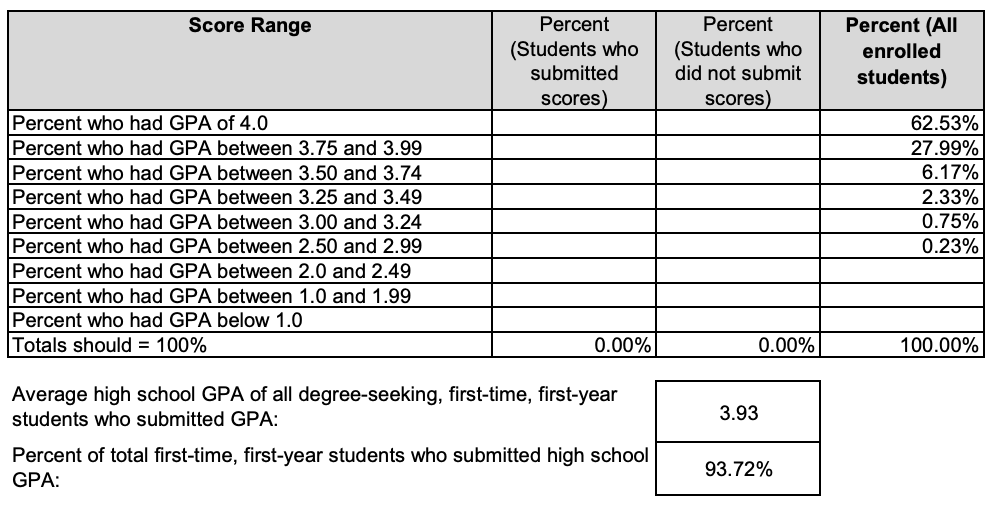- The College Crest by Lets Unbound
- Posts
- What Colleges Should I Apply To?
What Colleges Should I Apply To?
Making Your College List: A Step-by-Step Guide

With over 4500+ colleges available in the USA, you may be wondering, "Which colleges should I apply to?" How do you narrow down thousands of options to just 10-12?
The most effective way to refine your college list is to divide it into safety, target, and dream Colleges.
In this newsletter, we'll explain what each of these categories means and how to select the right college for you.
Let’s dive in!

What Are Dream, Target, and Safety Colleges?
"Dream," "Safety," and "Target" are terms often used when applying to colleges. They help describe your chances of getting accepted at different Colleges.
Knowing what these terms mean and which colleges fit into each category is an important part of the application process.
1️⃣ Dream Colleges
Dream Colleges are considered the best for your intended major, but where your academic stats and profile are below the average for accepted students in recent years.
Dream Colleges might be tough to get into (less than a 10% chance), but you should still apply. Even if it's a long shot, applying ensures you won’t look back wondering, "What if?" It’s better to try and know the outcome than to miss the opportunity altogether.
For example, if a College like Harvard has an average SAT score of 1520 and yours is 1450, Harvard could be a Dream College.
➡️ How to Find Your Dream Colleges
To find your Dream College, start by identifying your top priorities like academic programs and campus culture. Research colleges that excel in your field of interest and compare your academic stats with their averages. Visit campuses if possible, and seek advice from mentors. Even if the odds seem slim, apply to your dream Colleges to avoid future regrets.
At a minimum, you should consider applying to 3 Dream Colleges.
2️⃣ Target Colleges
Target Colleges, are colleges where you have a solid chance of getting in, though it's not guaranteed. Your grades and test scores are similar to the average accepted students there.
Target Colleges are usually ones you'd be excited to attend. At a minimum, you should consider applying to 4 target Colleges.
➡️ How to Find Your Target Colleges
To find your target Colleges, look for colleges where your grades and test scores are similar to those of the average accepted students. For example, if a College like Johns Hopkins University has accepted students with an average GPA score of 3.93 and your score is in that range, it could be a good match.

Source: Common Data Set 2023-24, Johns Hopkins University
Have you finalised your college list? |
3️⃣ Safety Colleges
Safety Colleges are colleges where you have more than 70% chance of getting accepted. These Colleges usually admit students with lower test scores and GPAs than yours. Even though you're likely to get in, make sure these Colleges still meet your criteria for an ideal college.
While safety Colleges might not be the most challenging academically for you, they should still be a good fit and offer opportunities to learn and grow. Aim to apply to at least two safety Colleges to ensure you have options where you're likely to be accepted.
➡️ How to Find Your Safety Colleges
These are colleges with very high acceptance rates. For example, the University of North Carolina at Charlotte has an acceptance rate of nearly 80%. If you have a reasonably good GPA, test scores, and profile, getting admitted to these universities should be a breeze.
Check the admissions statistics on the college’s website or use tools like the College Board’s BigFuture website for this data.
You should consider applying to at least two safety Colleges.

How Can You Find Data on Prospective Colleges?
To figure out your chances of getting into a particular College, compare your grades and test scores with those of the average accepted student. So, where do you find this information?
You can use College Board’s official platform for college search - Big Future,
Check the college’s official website
Get personalized guidance through Lets Unbound 1:1 mentorship.
1. Big Future - College Board
If you're just starting your college search, this is a great place to begin. It’s designed for students who aren't sure where to start and guides you through the research process. There's an option called "College Search" under the “Plan for College” menu.
You can find Colleges that match your criteria or search for specific ones directly. You can also compare Colleges, and the information is presented in a simpler way, making it easier to understand than some other sites.
2. Check the College’s Official Website
You can find plenty of useful information about a college on its website, especially in the admissions section.
Many colleges share details about the average GPA and SAT/ACT scores of students they accept each year. To get this information quickly, try searching for phrases like "[College Name] average SAT scores" or "[College Name] average GPA."
To give you one example, the following graphic is taken from Princeton University.
3. Lets Unbound 1:1 mentorship
If you’re looking for personalized, step-by-step guidance. Lets Unbound is here to help.
We’ll guide you throughout your admission process based on your preferences, academics, and other crucial factors.
Key Factors to Consider Before Selecting College
In addition to estimating your chances, it's important to consider other factors when creating your college list. While there are many things to think about, for this guide, let's focus on five key factors.
📌 Types of Colleges
If you have a strong interest in conducting research or pursuing advanced degrees, research universities may be the best fit. On the other hand, if you prefer a broader educational experience with an emphasis on critical thinking, writing, and communication, liberal arts colleges may be ideal. These Colleges focus on undergraduate education.
Public colleges are generally more affordable, especially for in-state students, with larger campuses, diverse student bodies, and a wide range of programs. Private colleges are often more selective with smaller class sizes, personalized support, and potentially more generous financial aid options.
📌 Location
Decide how far from home you're willing to go. While considering distance; prefer to use the time required to travel rather than the distance. In some cases, staying close might seem cheaper or more comfortable, but you could miss out on great opportunities farther away. Consider whether you prefer an urban, suburban, or rural setting, and think about climate as well.
📌 Campus Life
Campus size and feel are important. Do you prefer a large student body or a smaller, more intimate setting? Think about what kind of environment you want—whether it's a campus where students stay most of the time, a focus on sports, activism, or academics.

📌 Budget/Scholarship
Budget is a crucial factor for many families, but don’t dismiss Colleges solely based on their cost. Explore financial aid options, and scholarships, and evaluate whether loans might be needed based on your career prospects after graduation. There are often ways to make education more affordable.
What is the most important factor in choosing a college? |
📌 Majors
When choosing a college, consider your academic and career goals. Think about which courses or specializations align with your interests and whether you have specific job aspirations. Reflect on the type of learning environment that suits you best—whether it's large lectures, small groups, or hands-on experiences. Clear goals will help you eliminate colleges with weaker programs in your areas of interest.
By reflecting on these factors, you'll be able to narrow down your options and find colleges that are a good fit for you.
At a Glance ⚡️
✅ Categorize Your College List: Divide colleges into dream, target, and safety Colleges to target your applications effectively.
✅ Dream Colleges: Aspirational Colleges which are difficult to reach. Apply to at least three.
✅ Target Colleges: Where your stats align with the average accepted students. Apply to at least four.
✅ Safety Colleges: Where your chances of acceptance are high. Ensure they still meet your needs and apply to at least two.
✅ Finding Data: Use college search engines, official websites, and personalized guidance to compare your stats with accepted students.

—--------------------------------------
Amol & Nishant,
The College Crest - Powered by Lets Unbound,
We have worked with thousands of students over the past 7 years. This newsletter captures the essence of our insights to simplify the college readiness journey.